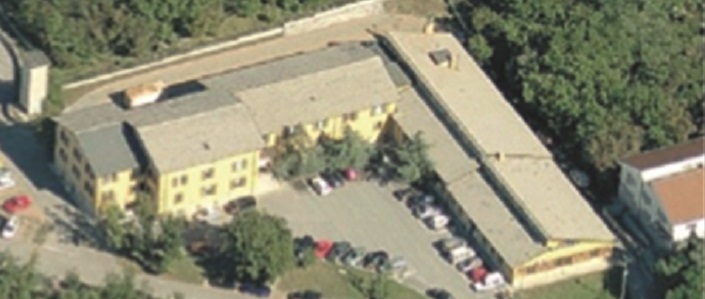|
Istituto Nazionale di Oceanografia e di Geofisica Sperimentale (OGS)
|

|
|
Type of Research Institution
|
| | Intergovernmental | | | Academic | |  | Governmental, national | | | Private | | | Governmental, local | | | Charity / Foundation |
|
|
|
Address : Borgo Grotta Gigante 42/C - 34010
Sgonico Trieste
ITALY |
|
Phone :
+39 040 21401
|
|
|
|
Director :
Dr Paola Del Negro
|
|
Contact person :
|
|
|
|
|
Number of permanent staff
|
| | Scientists (with doctorate/ PhD) : 63 | | | others : 141 |
|
|
|
Type of Activities
|
|  | Pure research | | | Academic | |  | Applied research | |  | Education / Outreach | |  | Long-term monitoring | |  | Policy / Planning / Consultancy | |  | Technology for environmental applications | |  | Conservation & Protection |
|
|
|
Main fields of research (at present - 6 max)
|
| physical oceanography, biogeochemistry, marine biology, modeling of marine system, environment and climate, biodiversity and ecosystem functionality |
|
|
|
Main research collaborations at international level (at present)
|
| * Joint Research Unit LifeWatch-ERIC, ARGO, EMODnet, JERICO, COPERNICUS |
|
|
|
Ongoing long-term monitoring programs
|
| * Site Gulf of Trieste has been formally included in the Italian network of long-term ecological research (LTER-Italy) as part of the macrosite LTER - Northern Adriatic Sea; The discontinuous monitoring was supported, since 1998, by a continuous control thanks to the positioning of a weather and oceanographic buoy called "Mambo" (Environmental Monitoring Operational) dedicated to the continuous acquisition of meteorological and oceanographic data. The implemented site (site "Gulf of Trieste") had the endorsement by IMBER (Integrated Marine Biogeochemistry and Ecosystem Research). Also in the Gulf of Trieste, OGS coordinates, on behalf of the Civil Defence, the system of MAMBO buoy positioned at the mouth of the Isonzo and Tagliamento rivers and inlets of the Lagoon of Grado and Marano lagoon; SAILOR Southern Adriatic Interdisciplinary Laboratory for Oceanographic Research (E2-M3A Buoy); ECCSEL European Carbon Dioxide Capture and Storage Laboratory Infrasructure (Panarea Laboratory – Isole Eolie). |
|
|
|
Total area dedicated to research (m2)
|
|
|
|
|
Conference room
|
| no |  | yes (number of seats : 40 ) |
|
|
|
Research vessel(s)
|
| less than 12 m in length; number of vessels : 0 |  | more than 12 m in length; number of vessels : 1 | | Brief description of vessels and on board scientific equipment :
“R/V Laura Bassi”: today the only Italian ship capable of operating in polar seas, both in Antarctica and in the Arctic. It is an icebreaker, compliant with the new international rules for the access of ships to the polar areas (the so-called 'Polar Code'), and therefore manages to access areas covered by sea ice, something that in the past had never been possible with Italian ships. It has been owned by the National Institute of Oceanography and Experimental Geophysics - OGS since May 2019 but is in support of the entire scientific community, thanks to an agreement between the main national bodies that study polar areas and manage their infrastructures. It is a multipurpose ship that has scientific research capacity associated with a remarkable ability to transport materials and people. |
|
|
|
Other major research facilities and equipment
|
* Biochemistry laboratories equipped with: analytical and ultramicroanalytical scales, Shimadzu 1500 and Jasco FP-6500 spectrofluorimeters; VARIAN Cary 100 and Cary 50 UV-Visible spectrophotometers, Mettler Toledo G20 automatic titrators, Agilent 1100 HPLC high performance liquid chromatograph, Shimadzu TOC - VCSH Analyzer, CHN Costech Elemental combustion System Elemental Analyzer, BRAN-LUEBBE segmented flow analyzer for the nutrient analysis.
* Microscopy laboratories equipped for qualitative and quantitative analyzes of planktonic and benthic communities (phase contrast optical microscopes, inverted optical microscopes, epifluorescence microscopes, stereo microscopes), laboratory of molecular biology for the study of the structure of populations. Radioisotopic measurements (14C and 3H) aimed at estimating primary production and secondary production (Quanta Smart TRI-CARB 2900 scintillator).
* Rooms equipped to carry out microbiological analyzes on different marine matrices: water, sediments, vertebrates and invertebrates. Air-conditioned rooms suitable for the preparation of a laboratory equipped with aquariums with continuous exchange of sea water and automatic control of the main parameters (light, temperature, CO2, pH) are available.
* Collection of marine microorganism cultures (CoSMi):dozens of planktonic and benthic species, set up in air-conditioned and suitably equipped rooms, for ecophysiological and biomolecular studies aimed at determining the life cycle and genetic characterization carried out in dedicated laboratories. |
|
|
|
Ecosystem types available nearby
|
 | Direct access to sea |  | Direct access to brackish / estuarine waters |
|
|
|
Areas of taxonomic expertise
|
| phytoplankton, mesozooplankton, microzooplankton, microphytobenthos, meiobenthos, macrozoobenthos |
|
|
|
Specimen collections
|
 | yes | | no | |
Brief description : collection of Sea Microoganisms, CoSMi, includes many species of unicellular (autothropic and heterotrophic) eukaryotes that belong to the broad categories of diatoms, flagellates and ciliates
|
|
|
|
Hosting facilities for visiting scientists
|
| yes |  | no |
|
|
|
Training courses
|
 | yes | | no | |
summers schools, advanced courses, seminars and workshops; master degree, PhD |
|
|
|
Capacity and brief description of library
|
| the library contains 12,261 monographs and OGS currently has 20 "electronic" subscriptions to magazines in our sector |
|
|
 CIESM GUIDE OF COASTAL INSTITUTES IN THE MEDITERRANEAN AND ADJACENT SEAS CIESM GUIDE OF COASTAL INSTITUTES IN THE MEDITERRANEAN AND ADJACENT SEAS
Last update : 01/02/2023
|

 CIESM GUIDE OF COASTAL INSTITUTES IN THE MEDITERRANEAN AND ADJACENT SEAS
CIESM GUIDE OF COASTAL INSTITUTES IN THE MEDITERRANEAN AND ADJACENT SEAS



